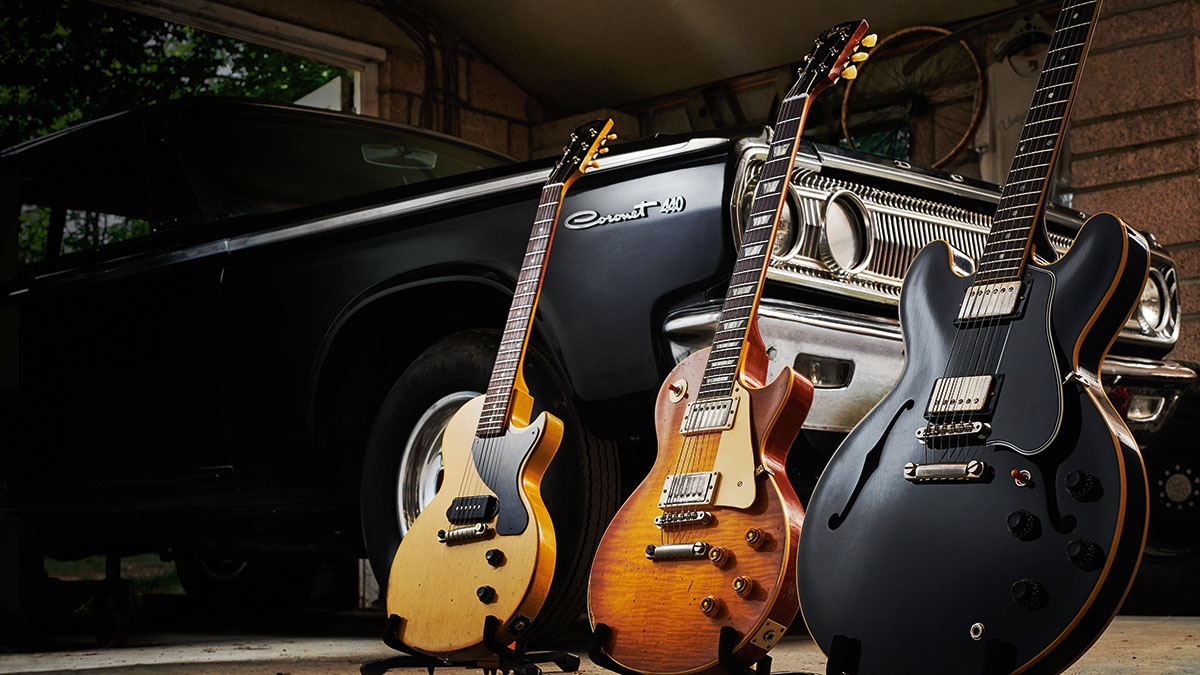Guitar World Verdict
The Murphy Lab is in its infancy. We’d guess that Gibson will see which models fly and which ones tend to hang around, and then amend the line-up accordingly. With that in mind, we’d probably wait for the right ES-335 to come along. As for the ’59 Les Paul, this one really is closer to an original than we’ve ever seen before. In fact, from the front we’d be hard-pressed to tell it apart from a genuine ’59.
Pros
- +
The Les Paul is Gibson at its best.
- +
Largely one of the most convincing ageing jobs we’ve seen. Stunning sounds and playability.
- +
The fabulous dot-neck ES-335 plays and sounds amazing.
- +
Junior has a believable finish, great weight and big neck. Playability.
- +
Sound is close to the real thing.
Cons
- -
An almost-new looking guitar with big lacquer cracks looks spoilt not enhanced.
- -
Unaged plastic parts.
- -
Junior's ’board edges too sharp in places.
- -
The P-90 could do with a shim.
- -
Cost of ageing elevates the price.
- -
Only one colour for the Junior.
- -
The Les Paul comes at a price.
- -
Difficult to make bare wood areas look convincing.
You can trust Guitar World
The history of Gibson’s Custom Shop is cloaked in mystery and intrigue. In Walt Carter’s book Keeping The Flame Alive he states: “In the early 90s, the Custom Shop didn’t really exist. It was an undefined group within the regular production facility at Gibson’s Nashville division. The R9 debuted at the January 1993 NAMM Show. Tom Murphy painted the finish on the first 25 sunbursts and the first 15 Goldtops.”
Of course, as is always the case with Gibson, the story is more complicated than that. There had been Custom Shop designated instruments for many years prior, but the Custom Shop as we know it today started as a separate facility back in 1993, with its own craftspeople and its own front door.
At Guitarist, we’ve been reviewing such examples as they’ve come and gone, and it seems every time we’d say something like, “…with this one they’ve come even closer to the originals”. Will the same be said of the three reissue guitars we have here: a Murphy Lab 1959 ES-335 in Ebony, a 1957 Les Paul Junior Single Cut in TV Yellow, and a 1959 Les Paul Standard in Lemon Burst?
The ES-335 is ultra-light aged, the Junior is heavy aged, while the ’59 Standard gets the top-level ultra-heavy ageing. As you’ll see in our Murphy Options box later in the review, the heavier the ageing, the higher the price. Time is money. The Murphy Lab, of course, refers to the aforementioned Tom Murphy.
We’ve reviewed instruments hand-finished and aged by Murphy before (this reviewer owns a ’57 Goldtop with Tom’s initials deftly secreted among the lacquer cracks). And you’ll learn all about how the Murphy Lab works in our interview with Gibson’s brand president, Cesar Gueikian, elsewhere in this feature. As Cesar tells us, the Murphy Lab receives ready-built instruments from the Custom Shop, where they are then finished and aged by the small team under Tom Murphy’s guidance.
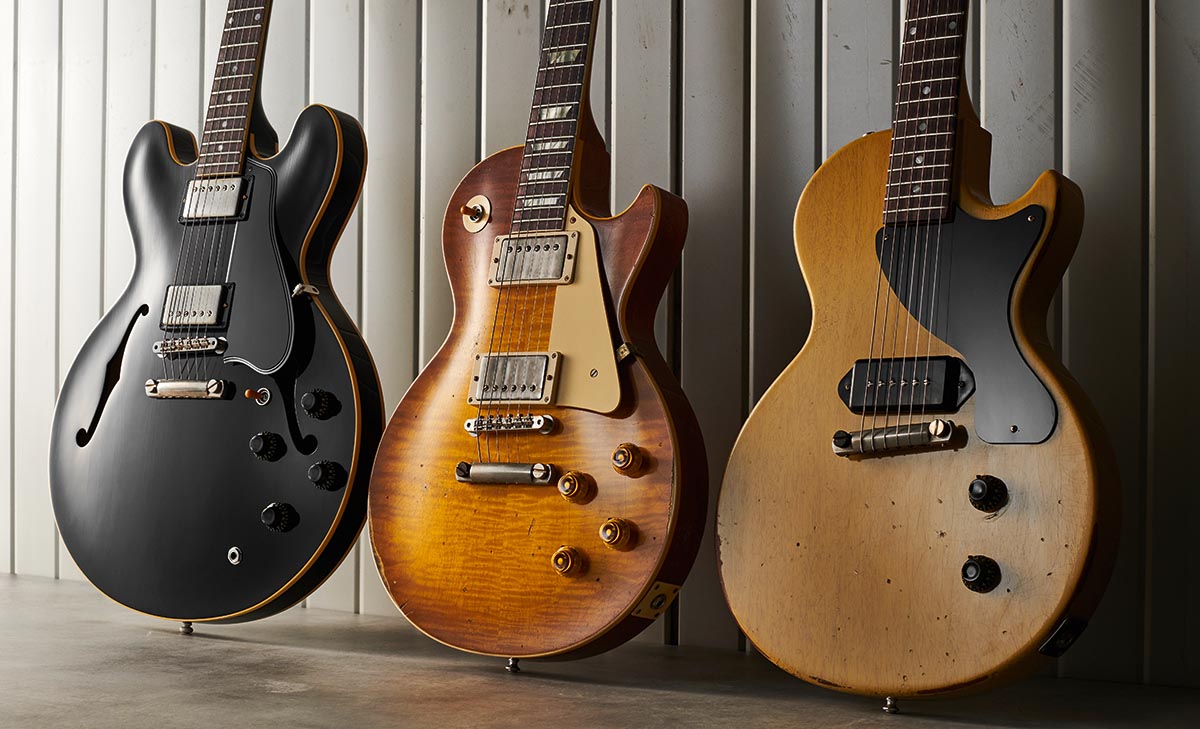
Finish
There’s little doubt, then, that the talking point and the initial engagement with these guitars is all to do with these aged finishes. Our dot-neck ES-335 is finished in Ebony, perhaps a strange choice when the model is so well known in its Sunburst, Cherry Red and Natural incarnations (there’s so far no sunburst available). That said, this one has an impressive ‘tuxedo’ vibe about it, and its exceptionally dark-grained Indian rosewood fingerboard looks great against the black nitro lacquer.
The ’59 Les Paul on the other hand is Lemon Burst and has, in this writer’s opinion, the perfect colour and flaming – not fine, ruler-drawn violin stripes or perfect, wide train lines but slightly haphazard and in no way over the top. In this faded finish with a hint of cherry toner remaining, it looks incredibly authentic. Our Junior is only available in TV Yellow and there’s no doubt it looks well gigged and pretty authentic.
The ES-335 is more or less a new-looking guitar but with large lacquer cracks running across every surface. These are primary cracks, with none of the secondary or ancillary lines running between them. There’s no playing wear and only the mildest hint of tarnish to the nickel work. Like the ’59 Les Paul, none of the plastic parts are aged, but here they don’t sit too awkwardly against the mild ageing elsewhere on the guitar.
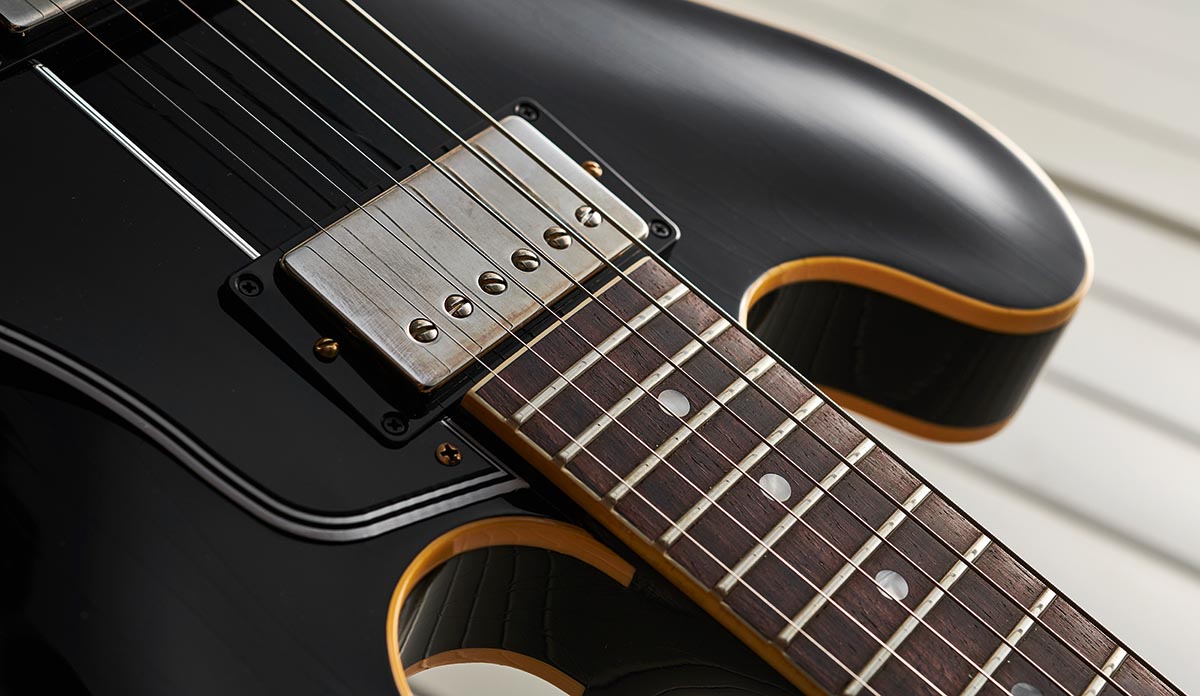
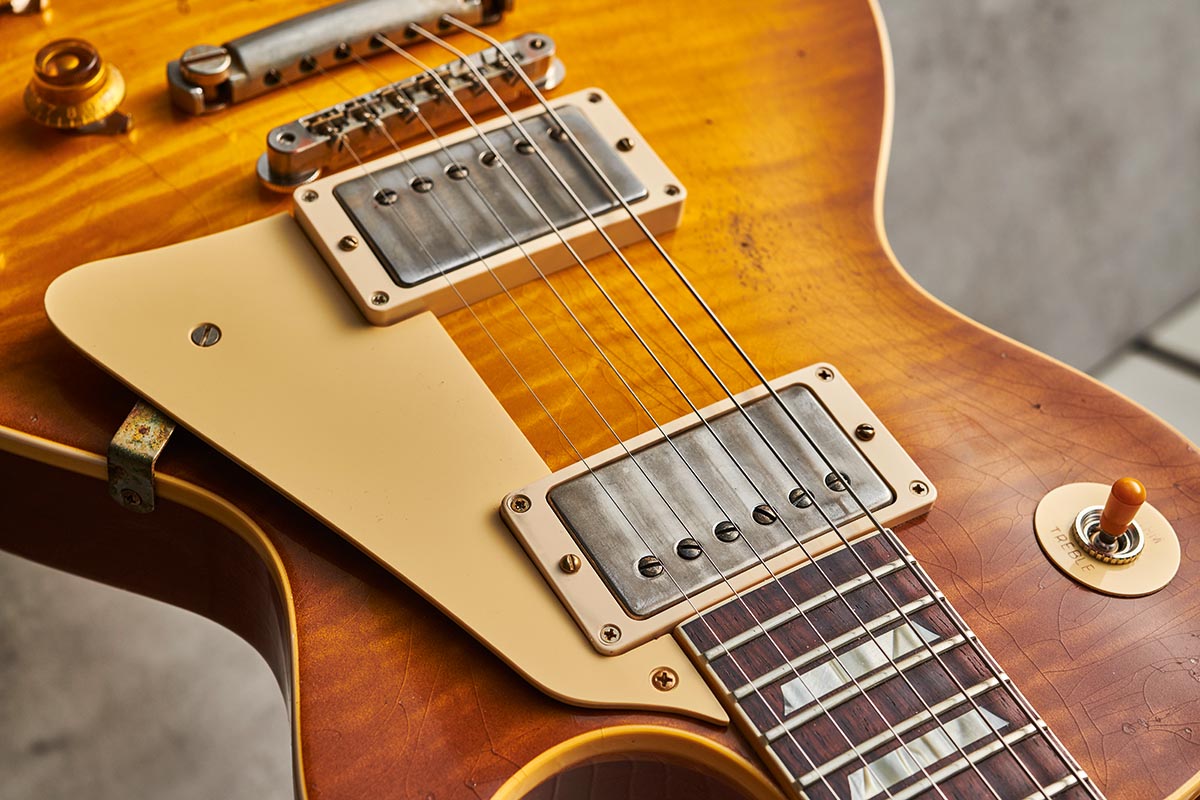
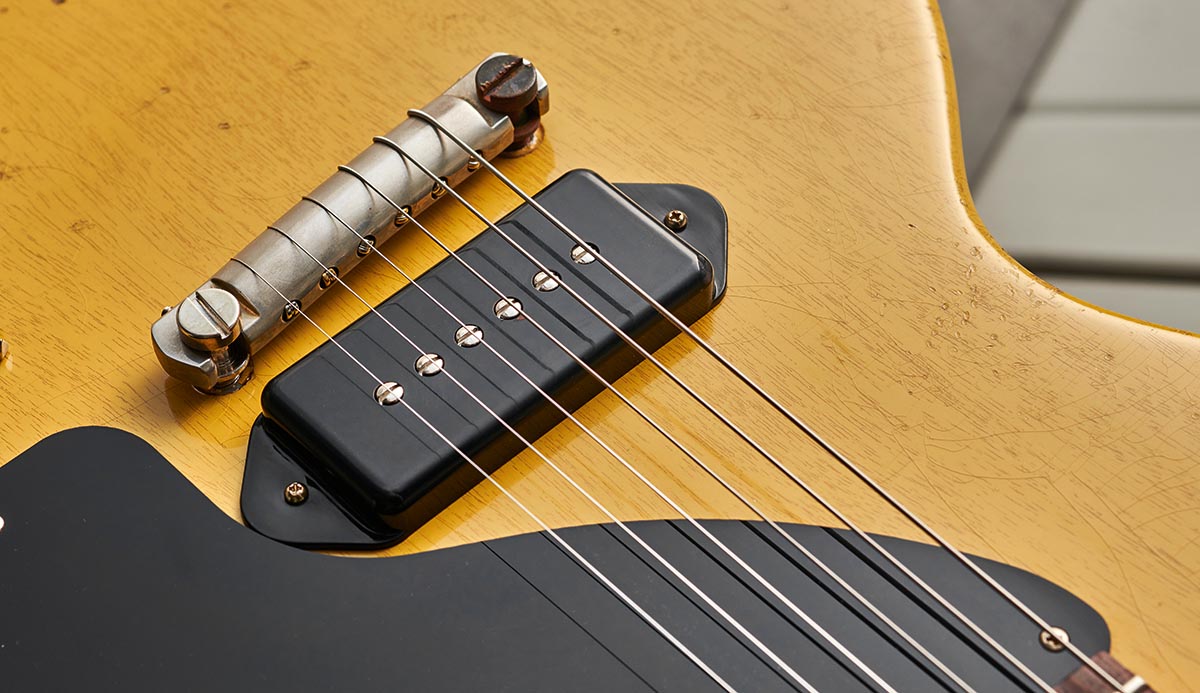
However, this situation is quite different with the ’59 Standard, which comes with the Lab’s most extreme ageing. So pristine humbucker rings, pickguard, knobs, jack socket surround, and so on, do seem somewhat at odds.
It’s the same with the ’57 Junior, where the classic shape of the single-piece plastic pickguard on this TV Yellow guitar really plays its part in the guitar’s appearance – much more than it does on a sunburst variant. The P-90 sits under the dog-ear cover and, unlike the rest of the guitar, these plastic parts, including the rear backplate, are unaged in contrast to the finish and hardware. It’s a glaring oddity in this Murphy Lab concept.
Continuing with the ’59 Les Paul, its lacquering and ageing is mostly excellent. Gibson hasn’t fallen into its old trap of dulling the finish, nor leaving the dreaded ‘orange peel’ of some VOS instruments.
This is very well done. Other than that the bare wood sections on the mahogany back and neck look a little unnatural. The grain pores are open and clearly visible, and on the neck these would have been filled by 60 years of finger grease, salty sweat, or solidified grain filler – and had a belt buckle taken that much finish off the back, surely the wood itself would have been a lot more pitted and compressed. And are those lacquer dings on the back just a bit too uniform? It’s the same with the Junior’s heavy ageing. As evocative as it is, details like those bare wood patches are simply less believable.
A guitar like the ES-335 gives its best when its voice is left to breathe… vibrato sounds very musical
Yes, we’re being extremely picky, but don’t forget this ’59 costs over £9k. Our Junior, well, you could probably buy a ‘player’s grade’ original for a similar £5.5k amount. But Tom Murphy does mention that the whole ageing process is in a constant state of flux and that they are learning new tricks all the time. So perhaps moans like this will be addressed further down the line.
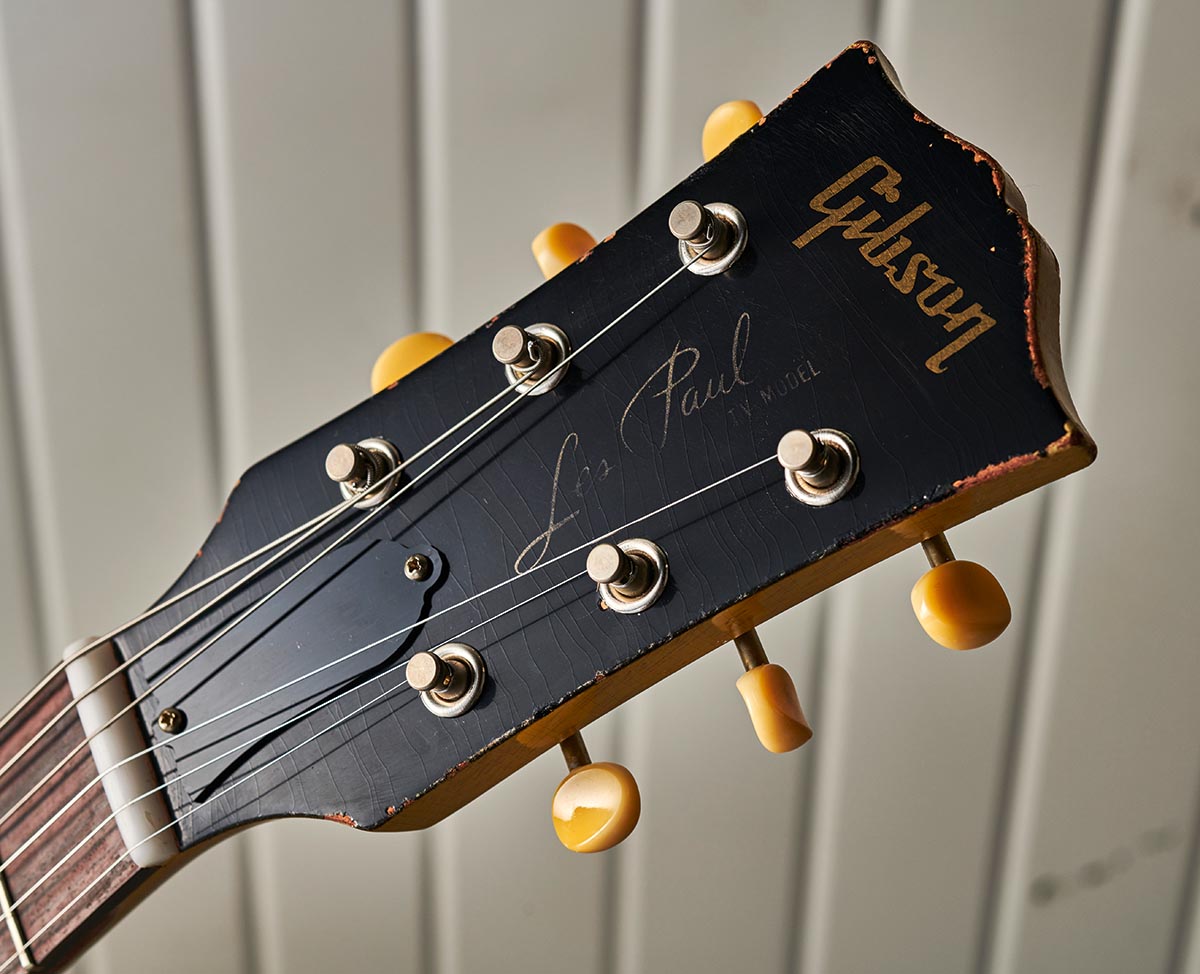
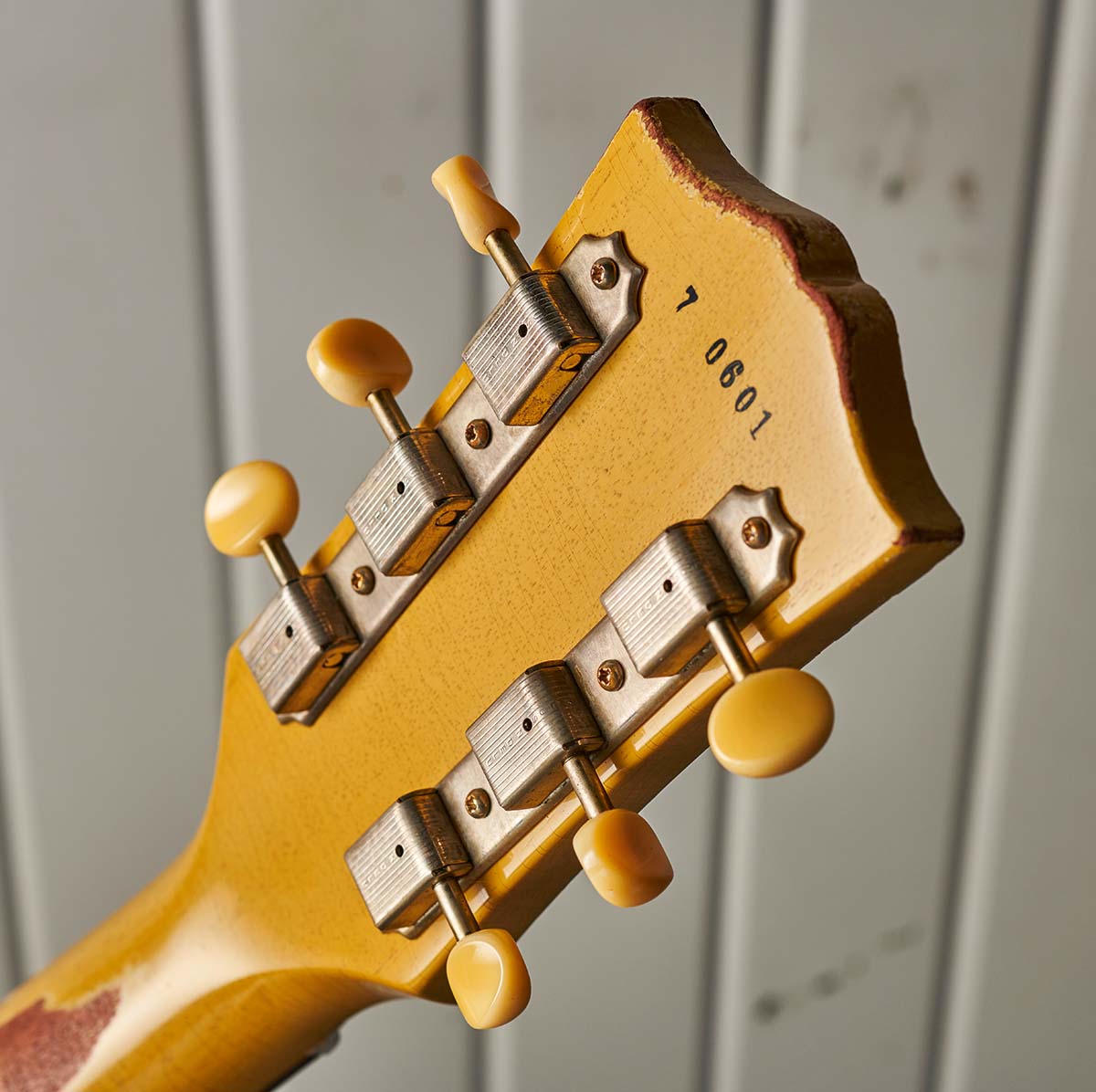
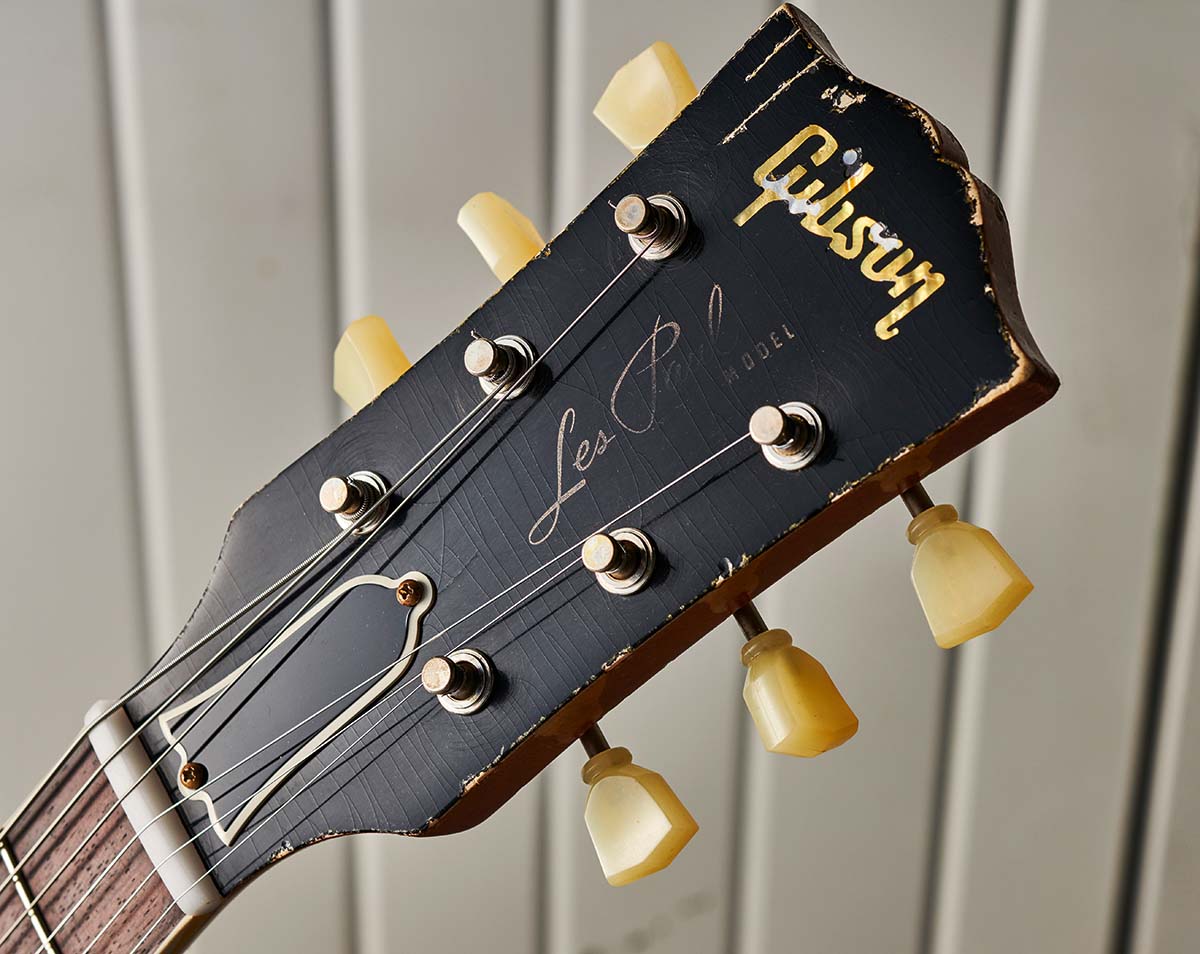
Construction
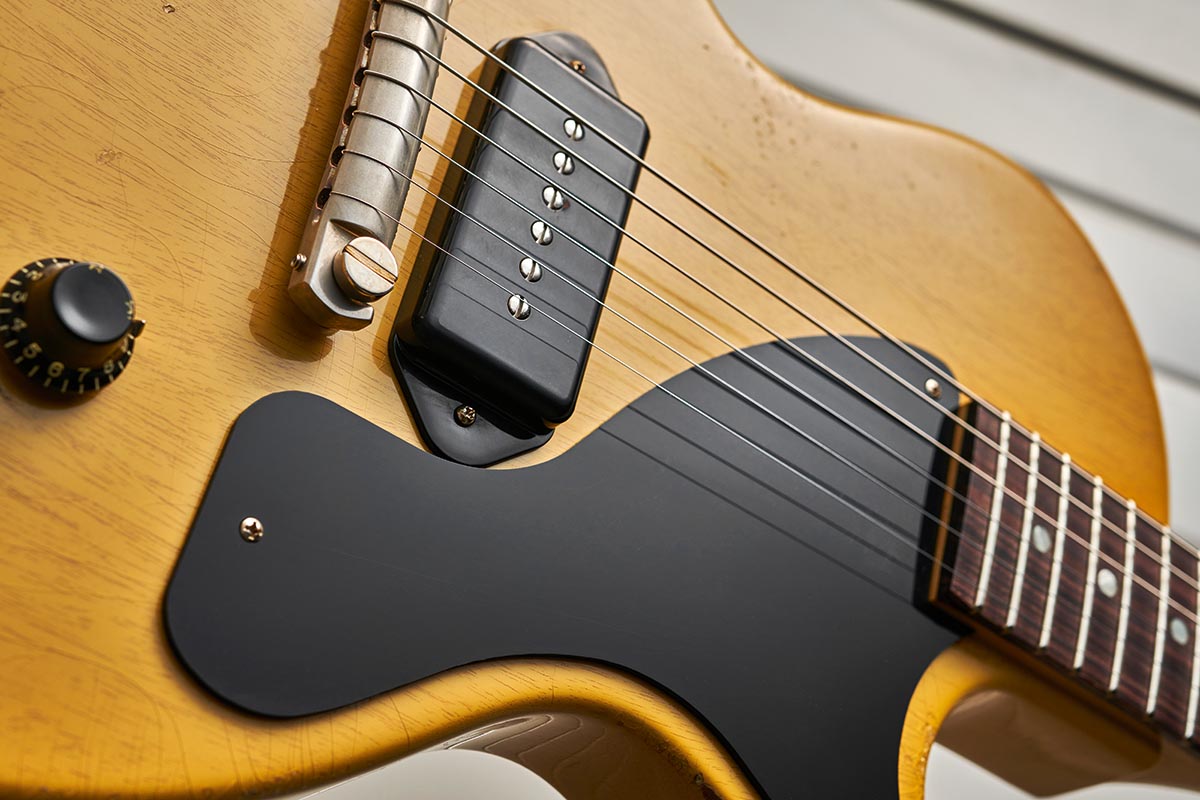
There are 50 different guitars in the current Murphy Lab line-up based on some 20 historic Gibson models in different ageing levels and colours.
Our 1959 ES-335 also comes in ultra-light aged Ebony with gold hardware ($5,799/£5,699) and, to the same spec as our reviewed model, light aged in Watermelon Red ($7,499/£6,599) and ultra-heavy aged in Vintage Natural ($9,299/£8,199). Meanwhile, our reviewed Junior comes in an ultra-light aged format at $4,299/£3,799 (there’s also a twin-pickup 1957 Les Paul Special Single Cut ultra-light at the same price).
The 1959 Les Paul Standard in Murphy Lab dress starts at ultra-light aged in Factory Burst, Southern Fade Burst and Sunrise Teaburst ($6,999/£6,099). The light aged level comes in Dirty Lemon Burst, Cherry Tea Burst and Royal Tea Burst ($7,999/£6,999). Next up is the heavy aged ’59, in Slow Iced Tea Fade, Lemon Fade and Golden Poppy Burst finishes ($8,999/£7,899).
As for the guitars’ construction, they follow tradition as regards timbers. Hence the ES-335 features a three-ply maple/poplar/maple laminated body with a centre block of solid maple, a Fijian mahogany neck and Indian rosewood fingerboard. The ’59 Les Paul has a solid Fijian mahogany back and neck, with flamed maple top and Indian rosewood ’board.
The Junior sticks closely to the original stripped-down recipe: a one-piece 45mm thick slab mahogany body, while the full-width of the mahogany neck slots into the body, resulting in that lip in the cutaway. Unlike the ’59 Les Paul Standard, the fingerboard is unbound and, of course, just dot-inlaid.
As you’d expect, hide glue wood joins prevail, and shapes, contours, et cetera, have been slavishly scanned from actual vintage examples. All of Gibson’s latest plastics, although unaged, conform as closely as possible to vintage specs, so there’s a lot to admire here.
Electrics-wise, both the ES-335 and ’59 Les Paul feature Gibson Alnico 3 Custombuckers, and these now come unpotted. This is said to offer a more transparent and open sound than when the coils are buried in wax. The Junior, of course, comes with its lone P-90 single coil in its ‘dog-ear’ cover, which first appeared on this model when it was introduced in 1954.
As it’s simply classed as a Custom Dogear P-90, we have little to go on, and obviously here we just have a volume and tone control. All our guitars use CTS 500k audio taper pots, while capacitors are traditional paper-in-oil. Toggle switches and jack sockets are by Switchcraft.
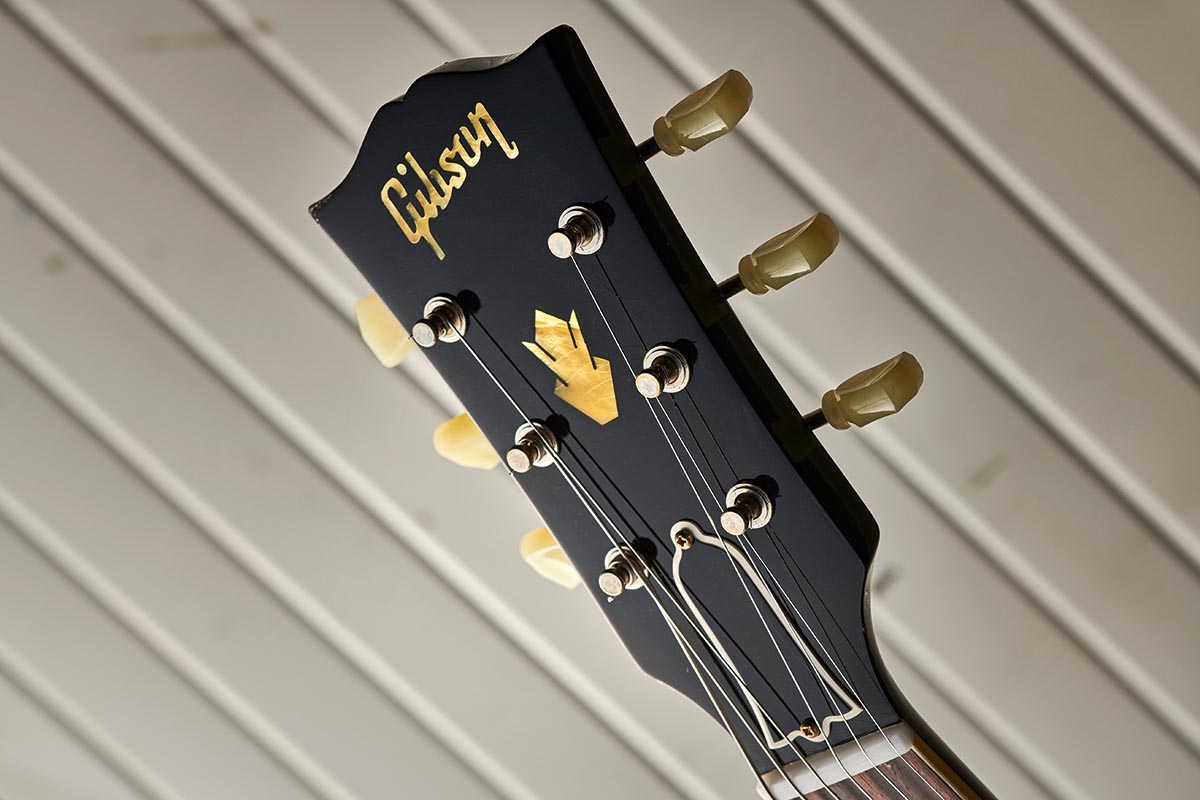
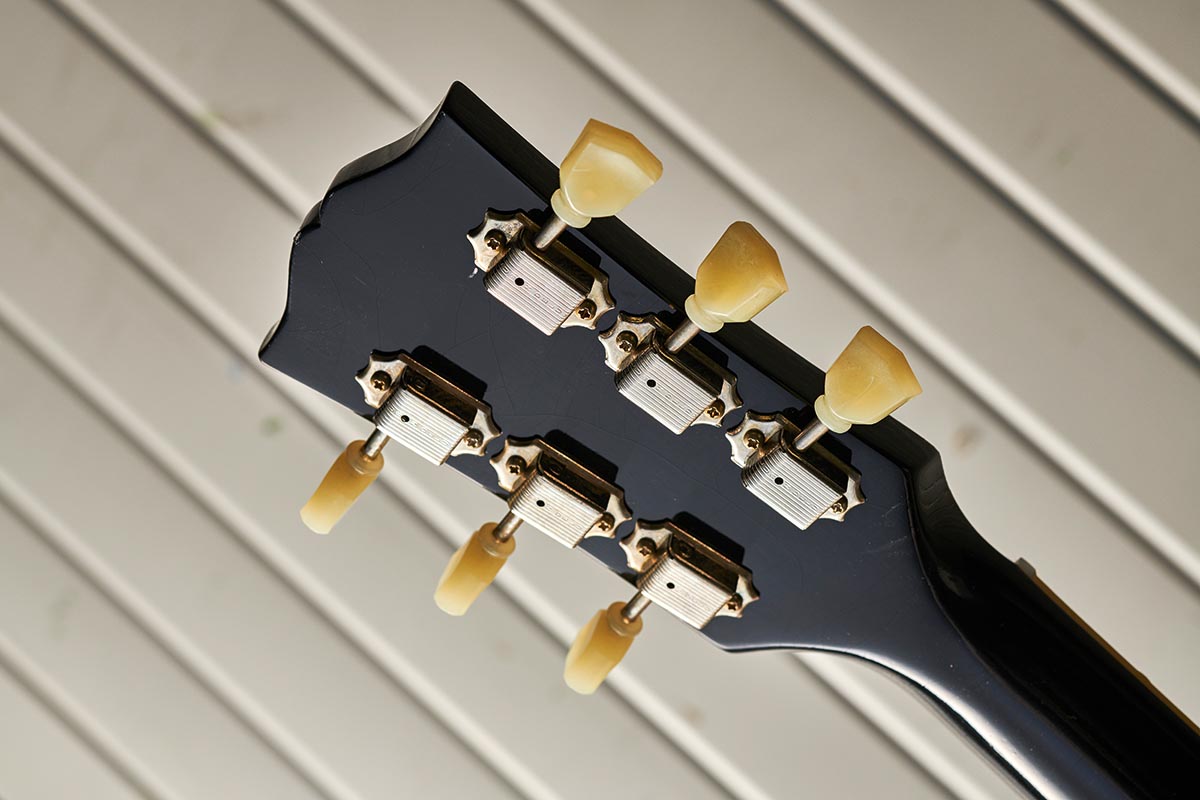
Feel & Sounds
Over the years Gibson has built on the accuracy of earlier reissues, constantly learning and improving, and arriving at a set of neck dimensions that now hits bullseye. Most players that we know, including all the Guitarist team, agree that the ’59 medium C profile, with not too much ‘shoulder’ on the carve, is the most player-friendly. So, how pleasing it was to pick up the ES-335 and ’59 Les Paul and find ourselves completely at home.
Juniors are known for their chunky neck shapes and if that’s your preference you won’t be disappointed here with this ‘Chunky C’ shape. That said, while the profile is a big clubby C with plenty of shoulder, the heavily aged neck back does give a slightly uneven feel.
Our guitars come perfectly set up with Gibson’ s standard 5/64th-inch (1.98mm) and 3/64th-inch (1.19mm) bass and treble action heights at the 12th fret. The necks are buzz free and the medium-jumbo frets do everything we always say they do – namely, provide enough fretboard clearance for string bending or squeezing out a tasty vibrato.
Naturally, the ES-335, with its double cutaways and 19th-fret neck join, allows for better top-fret access than the much more restricted Les Pauls, which provide no ‘thumb over the top’ facility past the 16th. But – again, as we say almost every time – this limitation hasn’t prevented a host of amazing players bringing us dazzling dusty end solos. The Junior’s higher-position access is further hampered by that body lip in the cutaway, but after quite a few decades of playing the real thing, it’s really never bothered us.
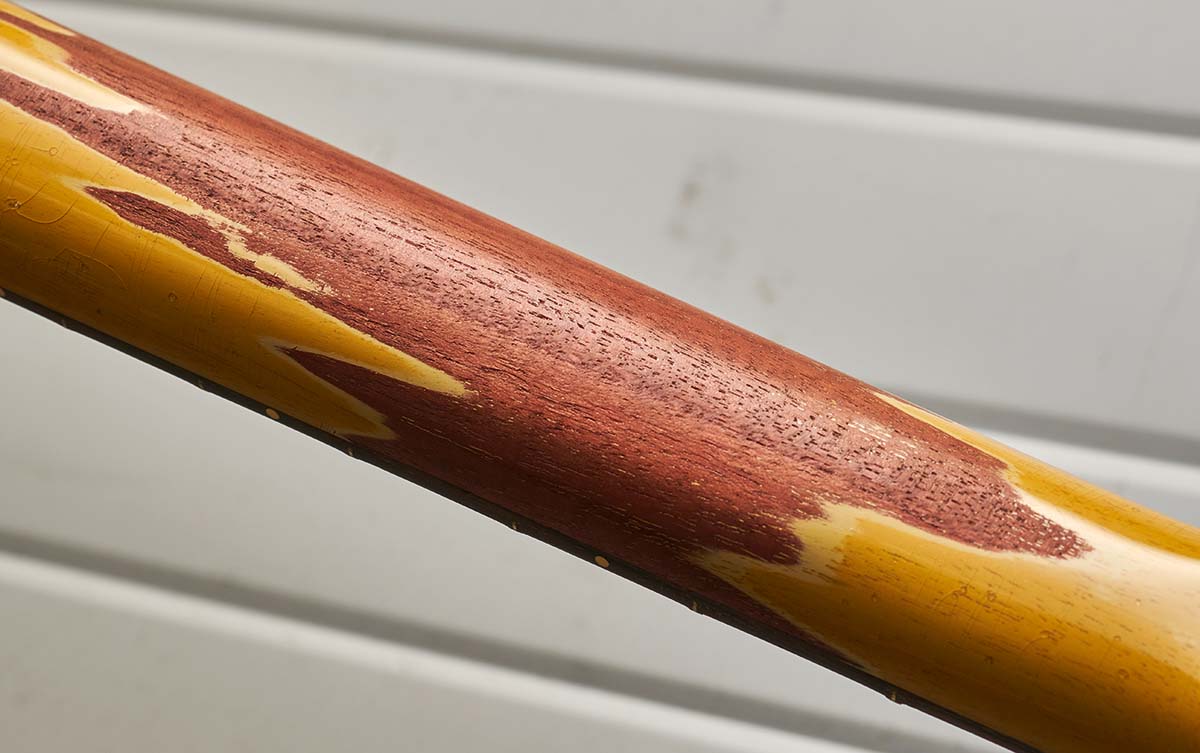
So, while the softly rounded necks of the ES-335 and ’59 Les Paul both clock in at 22mm at the 1st and 25mm at the 12th fret, give or take a hair’s breadth, the ES-335’s seems slimmer due to its perceived extra length and the guitar’s much bigger body. But in reality there’s all but nothing in it. Our Junior’s neck is marginally deeper, but it’s the fuller shoulders that really provide the added girth.
The guitars’ fingerboard edges are beautifully rolled, but the corners of the top nuts are left a little sharp, and if anything the edge rolling on the Junior is slightly less uniform. You can’t help thinking that a little more time fettling these would really make a difference. Other than that, they offer a delightful and fuss-free playing experience.
With our trusty Blues Junior fully warmed up and a classic drive pedal (Analog Man King Of Tone) in line, it’s time to hear what these can do. First up is the ES-335. Played clean and with just a hint of reverb, it’s a gloriously rewarding set of tones. Every switch position offers a distinct voice and all the old clichés slip smoothly off the tongue: crisp and nicely nasal for the bridge, quacky and chiming for both, and smooth and plummy for the neck.
Turning down the volumes there’s a dip in treble response but in a really pleasing way; the taper is remarkably smooth and, while the volume itself doesn’t drop significantly until below 7 or so, we could find a place for every single sound – on every single switch setting. Particularly sweet was both pickups on, bridge up full and neck at about 7. Fruity! A guitar like this gives its best when its voice is left to breathe, so a hint of King Of Tone simply ramped up what we already had by a few notches. This left bends free to sing and vibrato sounding very musical.
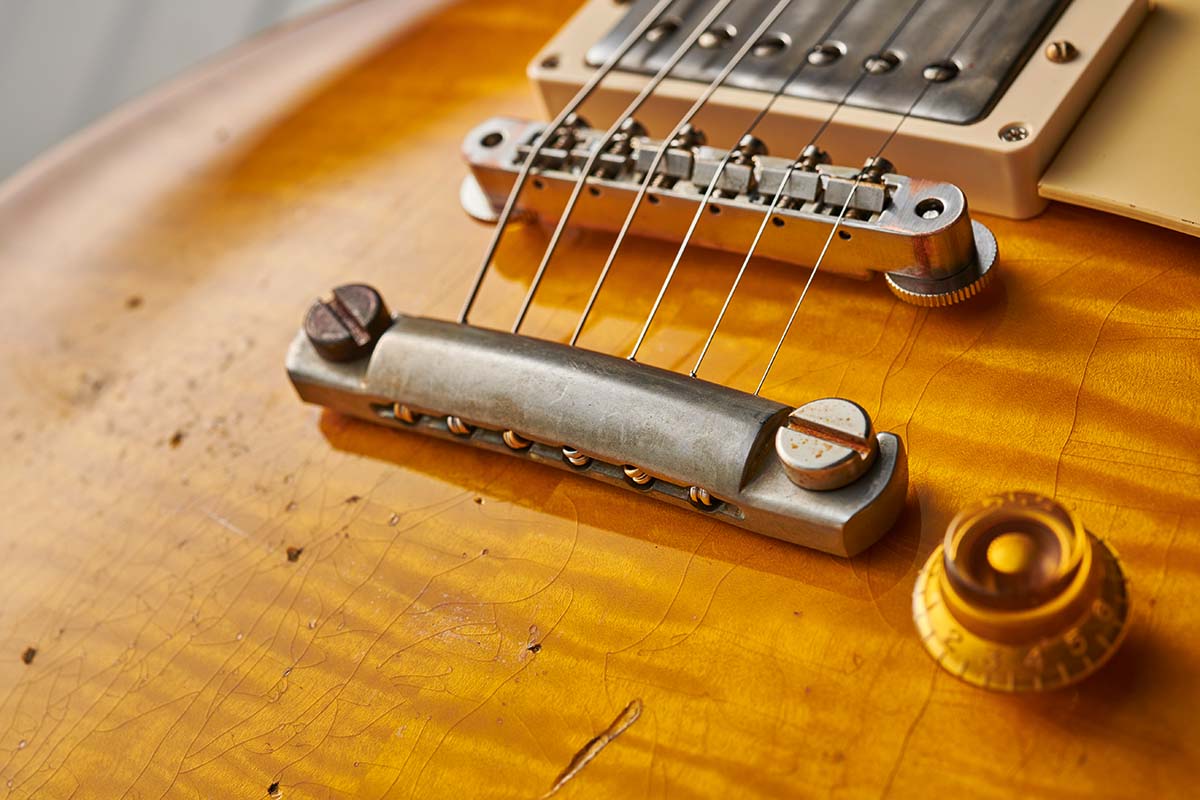
Swapping instruments and running through the same sequence of settings, everything about the ’59 Les Paul seems tighter, that big lump of mahogany and maple perhaps lending a bit more muscle. The tones are darker, too, but not by much – the Les Paul makes the ES-335 seem more ‘scooped’ overall, and it’s that extra kick of middle that provides the punch. At extreme volumes, we’d guess that where the 335 might lose control and start banshee howling, the Les Paul would simply stay calm and carry on screaming.
On to the Junior and, even before we plug in, there’s noticeable power to its acoustic response with a quickly rising sustain tail. It’s very similar to our original ’57, which simply sounds a little more mature and slightly smoother with less ‘youthful’ attack. With its controls full up, there really is nothing wrong with the new Junior’s voice. It’s nicely mid-focused and edgy, raw and really quite ballsy.
Our real example does sound very similar, with a few exceptions: it has a sixth gear – the new ’57 sounds like the real thing with the volume just slightly pulled back. Adding a touch more gain, not least from any simple boost/overdrive, and you really do get close.
However, the way the controls work is noticeably different. The new ’57 model has slightly less range and lacks the ability to produce the surprising clear and clean tones of the original with the volume pulled back, not to mention the tone. It’s this interaction that’s less pronounced on the new guitar. But even if some of the finer details might be lacking, there’s little doubt that this is a very, very good example of the Junior style. It’s also one of the closest legal ‘clones’ of the original that this writer has ever experienced.
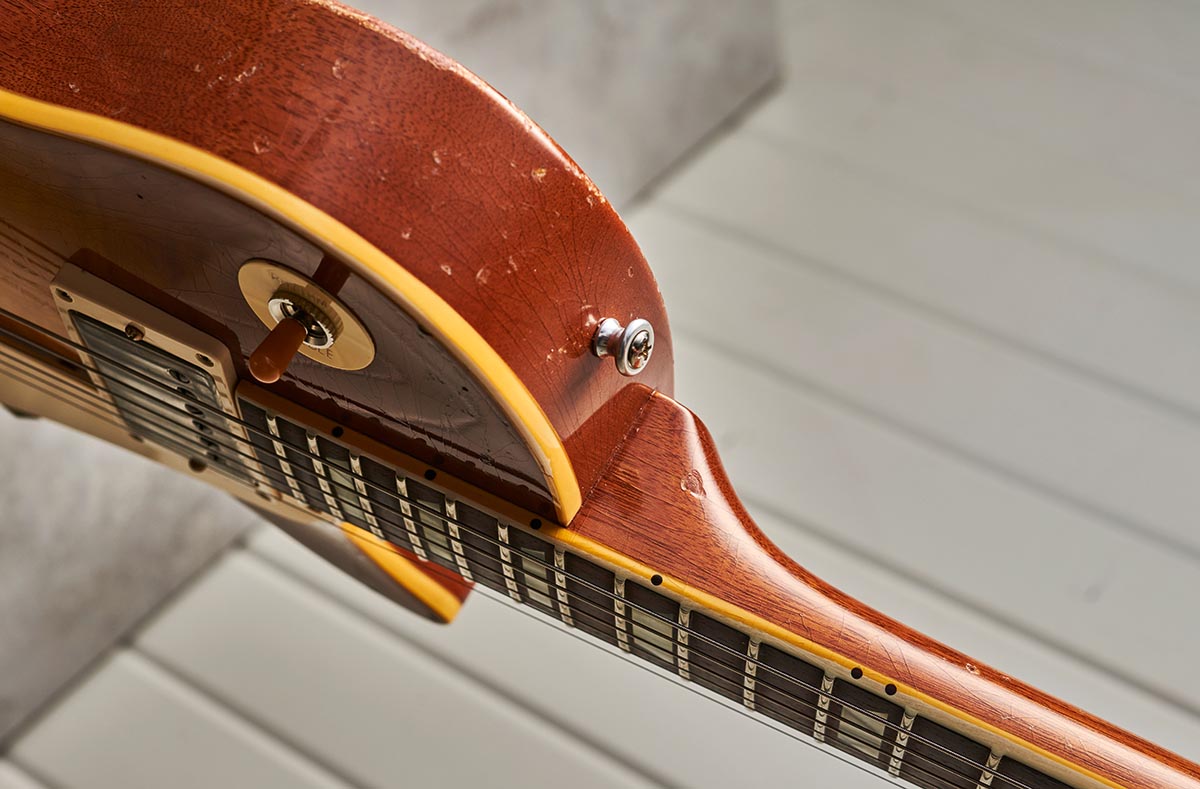
Verdict
To sum up a brand-new artisan-made guitar that sits north of the five grand mark is easy enough. Is it perfectly built? Are the materials, electrics and hardware of superlative quality? Does it play brilliantly and sound amazing? Simple! However, when it comes to guitars such as this that have been artificially aged to recreate various levels of use and abuse, at serious cost, it’s rather more tricky.
So, is the ageing authentic looking? Is that really how a guitar goes after a number of gigs? And by the standards of whichever style of player – aggressive, careful, cleans the instrument after every show, or just chucks it in the trunk?
The ultra-light aged ES-335 is an odd one. We think we’d rather see either a totally new guitar or one that’s an ageing grade or two above. This one, while a truly super ES-335 in every other respect, sits uncomfortably in no-man’s-land, the big cracks spoiling an otherwise cared-for ‘vintage’ guitar. At the moment, only a ’61 Cherry model in a heavy age is available, or a ’59 ultra heavy aged Vintage Natural version. And they are roughly two-and-a-half to four grand more!
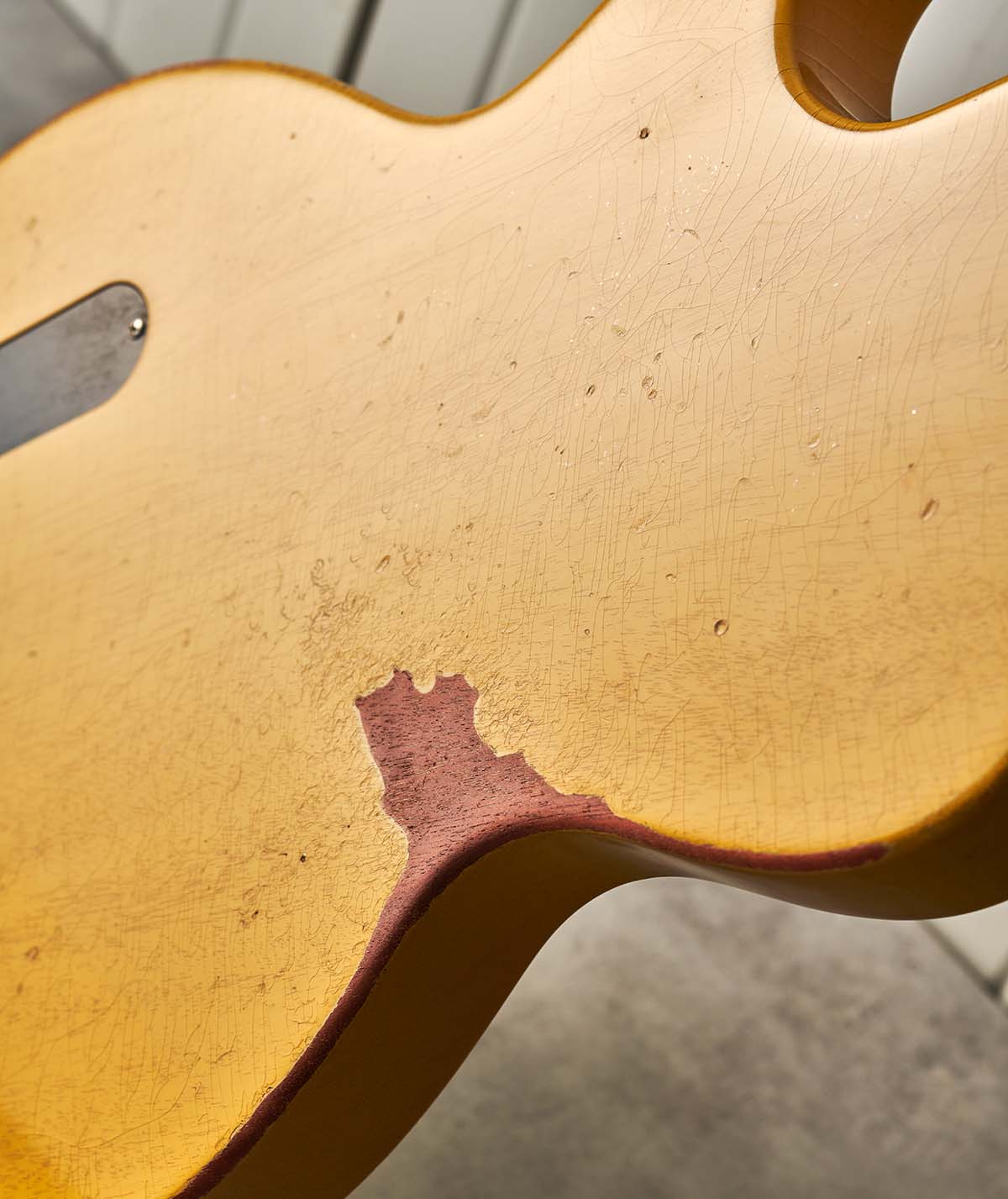
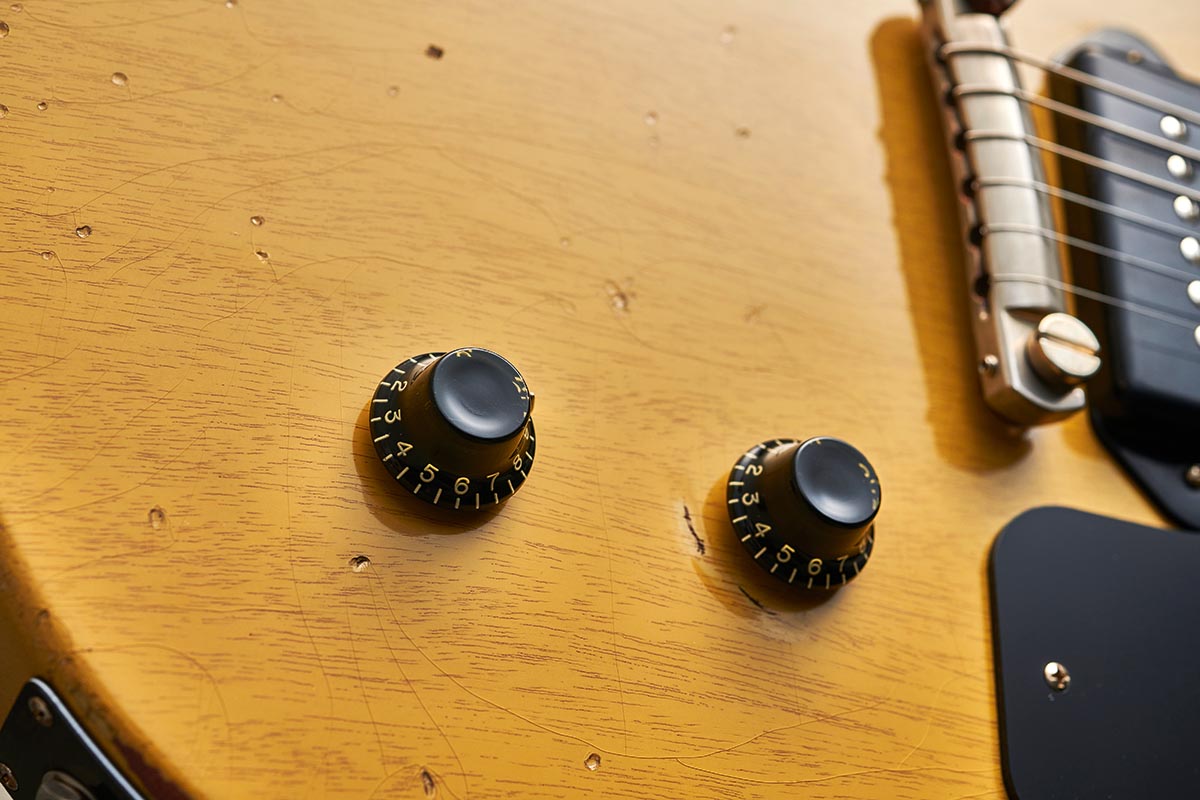
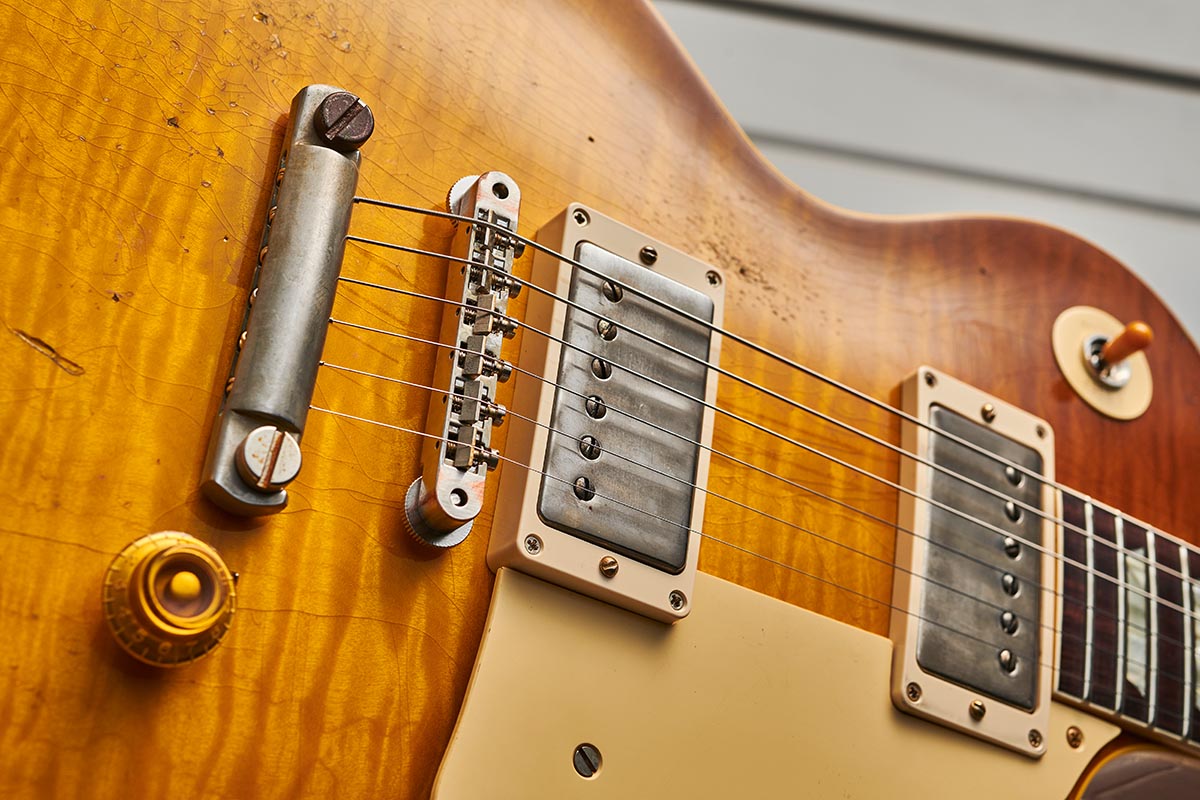
The Junior has the same dilemma. The light aged version of the same thing comes in £1,700 cheaper than our heavy aged review model, and while it really is a very good Junior, unlike our other two historic models here, you could buy a ‘player’s grade’ real thing for that amount of cash.
There’s also those unaged plastic parts to consider (also present on the ’59), which do give the impression that the Murphy Lab ran out of time in creating these fetching illusions. Nevertheless, despite those caveats, the Junior not only looks beautifully antique but it really captures the essence of this raw rock ’n’ roll classic.
Finally, the ’59 Les Paul. It’s a particularly fine example of its breed and one that’s been made to look as though it’s lived a pretty tough life. Most of the distressing is exceptionally well done and perfectly plausible, but we’re not convinced by some of the bare wood areas on this model.
We will admit that we’ve all seen reliced guitars and commented that “you’d never see ageing like that in real life…” only for a guitar with exactly that look to turn up the next day. What’s more, Tom Murphy really does know his onions, and Gibson has many more originals at its disposal for reference than we’re ever likely to see.
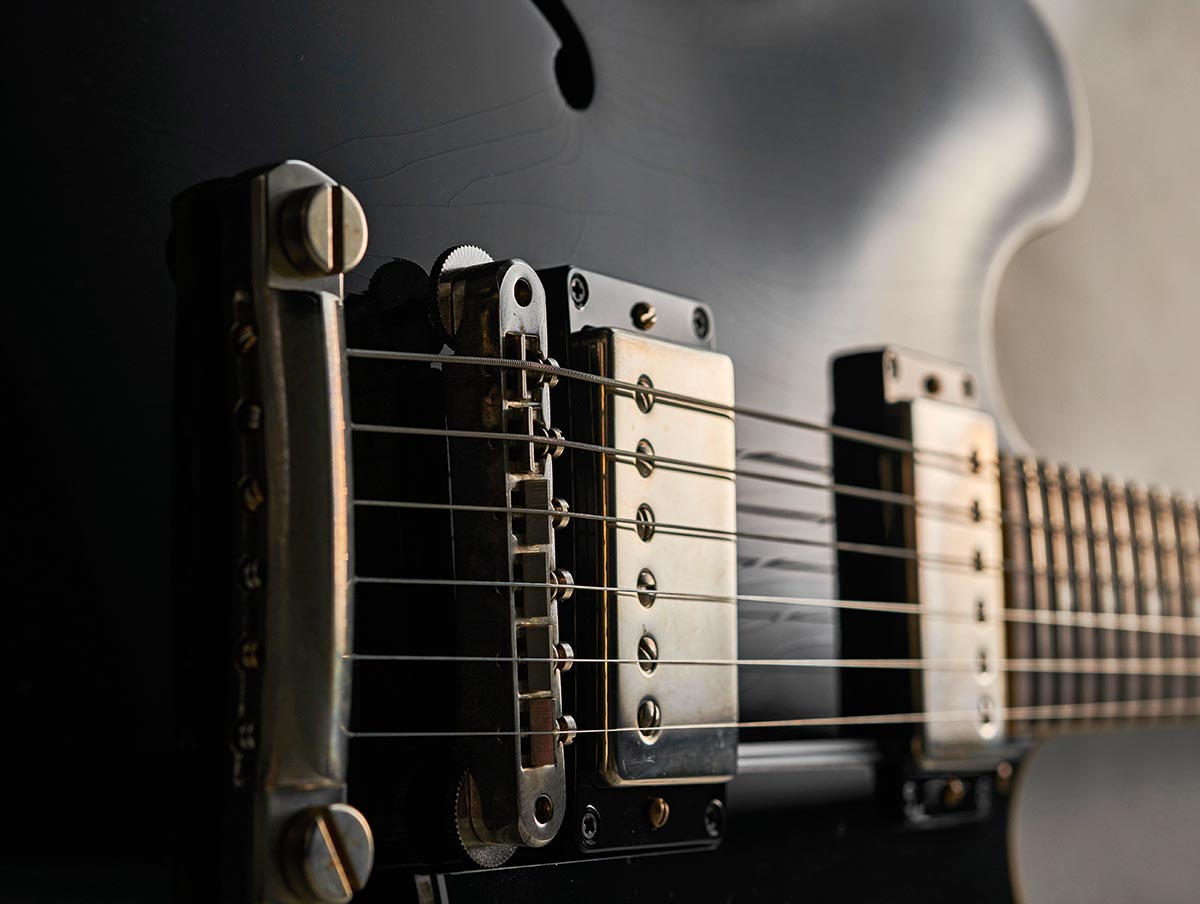
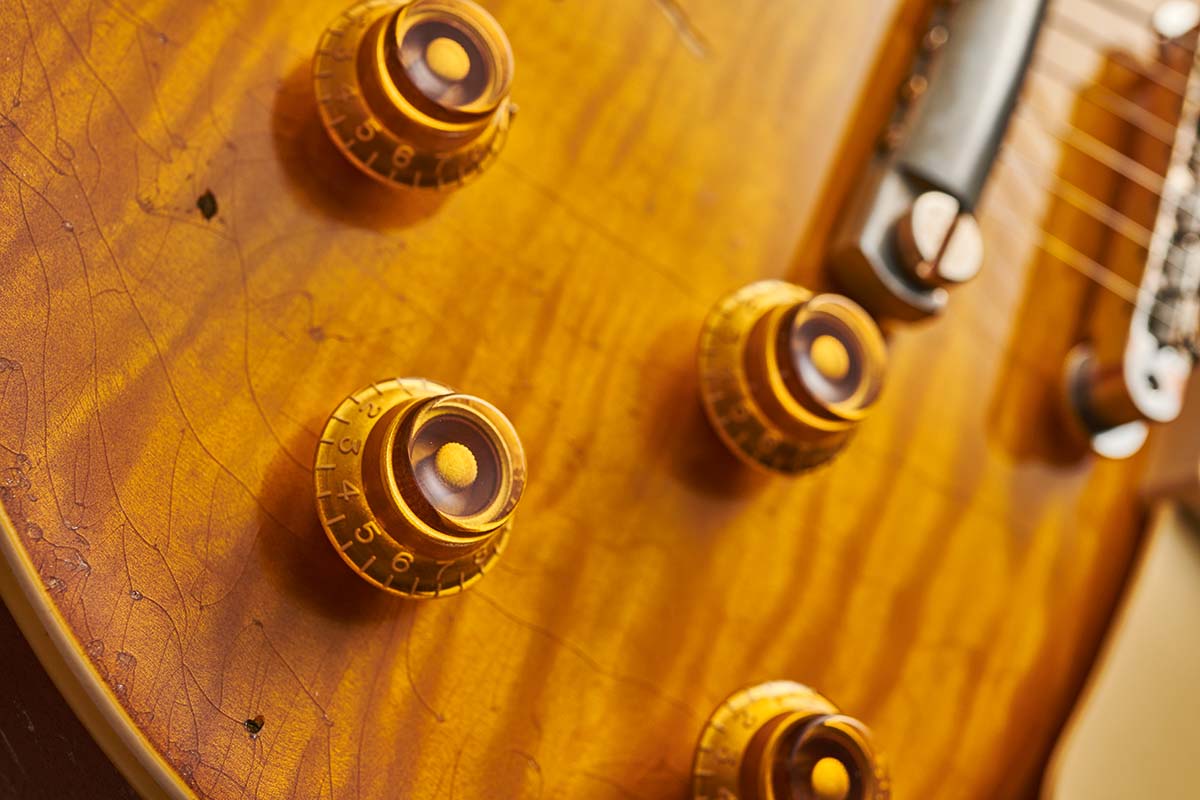
The Murphy Lab is in its infancy. We’d guess that Gibson will see which models fly and which ones tend to hang around, and then amend the line-up accordingly. With that in mind, we’d probably wait for the right ES-335 to come along. As for the ’59 Les Paul, this one really is closer to an original than we’ve ever seen before. In fact, from the front we’d be hard-pressed to tell it apart from a genuine ’59.
It’s important to remember that what you get here is a vintage-style guitar with no issues of provenance or originality. Pots are crackle-free, there are no fret issues and, to be frank, a few more minutes on a setup bench – as with virtually any new guitar – would raise their game even further. Expensive and not quite finished they may be, but you could also argue that they’re the closest most of us will ever get to the real thing.
Specs
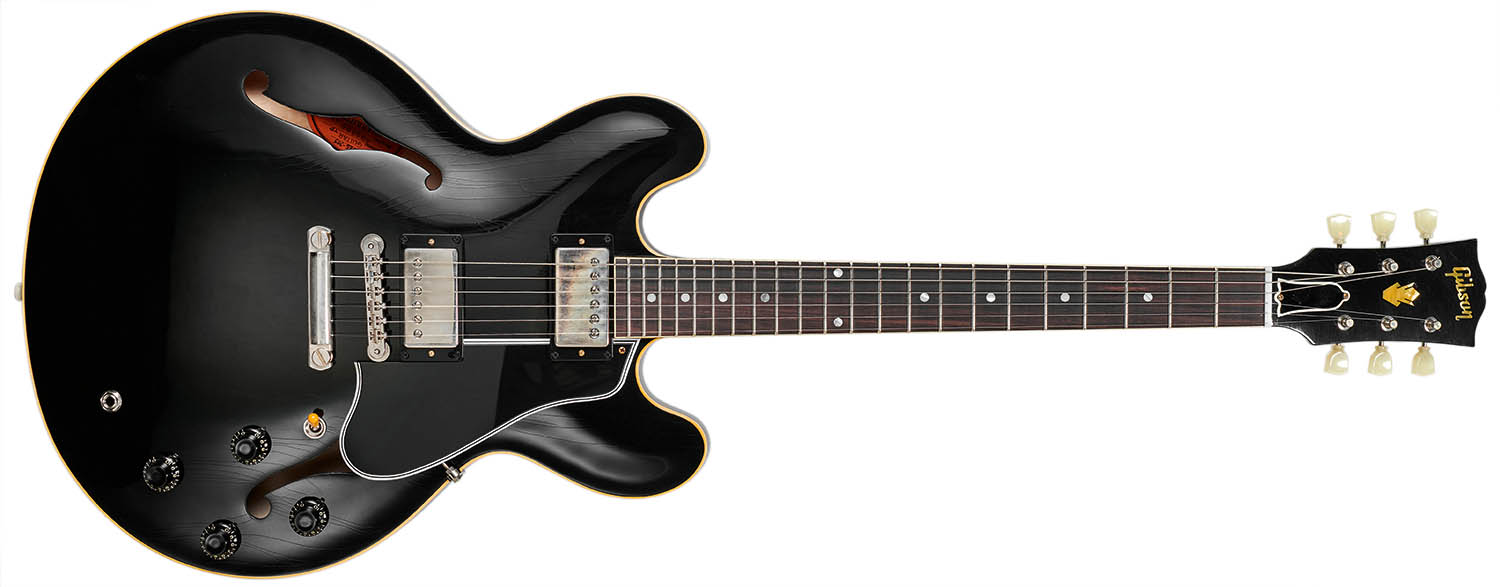
Gibson Murphy Lab ’59 ES-335 Reissue Ultra-light Aged
- PRICE: $5,799 / £5,099 (inc Lifton pink-lined case)
- ORIGIN: USA
- TYPE: Double-cutaway, semi-solid electric
- BODY: Laminated maple/poplar/maple with f-holes and solid maple centre block
- NECK: Mahogany, 59 ‘medium C’ profile with hide glue join
- SCALE LENGTH: 624mm (24.57”)
- NUT/WIDTH: Nylon/42.85mm
- FINGERBOARD: Bound dark Indian rosewood, pearloid dot markers, 305mm (12”) radius
- FRETS: 22, medium/jumbo
- HARDWARE: Nickel-plated ABR-1 tune-o-matic bridge, lightweight aluminium stopbar tailpiece, Kluson vintage, single line, single ring deluxe tuners
- STRING SPACING, BRIDGE: 51.5mm
- ELECTRICS: 2x Gibson Custombucker Alnico 3 pickups, 2x volumes, 2x tones, 3-way pickup selector; CTS 500k pots with paper-in-oil capacitors WEIGHT ˜kg/lb°: 5.55/7.82
- RANGE OPTIONS: See Murphy Options box
- LEFT-HANDERS: No
- FINISH: Ebony (as reviewed). Vintage Natural and Watermelon Red are also available (see Murphy Options) – ultra-light aged nitrocellulose
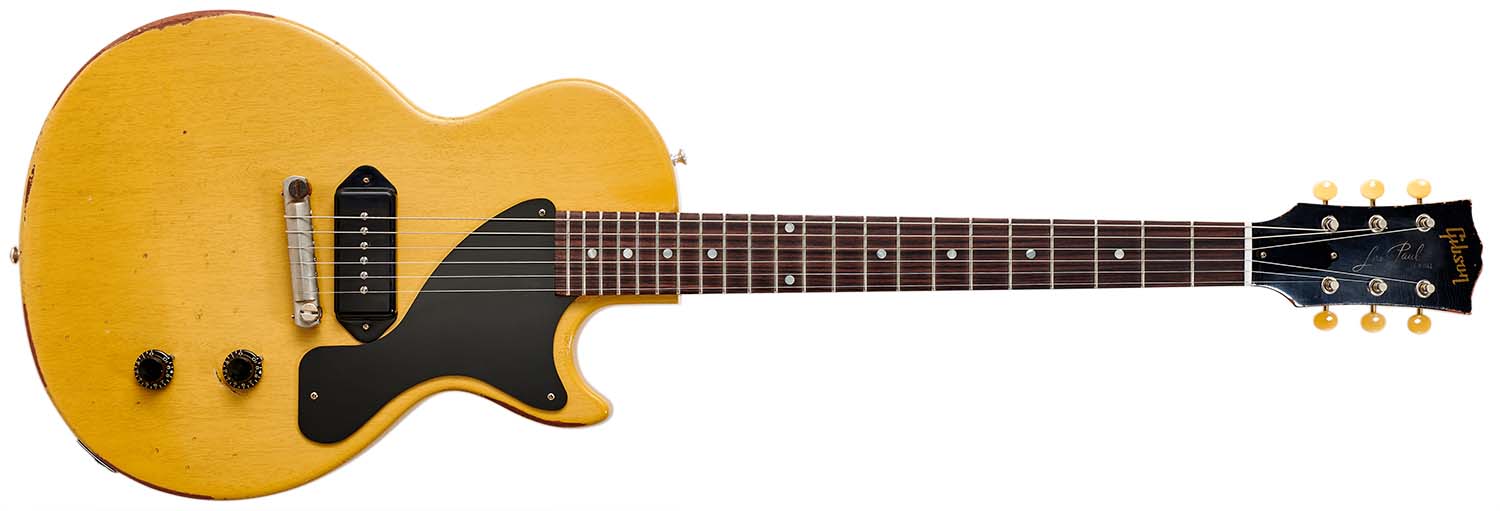
Gibson Murphy Lab ’57 Les Paul Junior Single Cut Reissue Heavy Aged
- PRICE: $6,299 / £5,499 (inc Lifton pink-lined case)
- ORIGIN: USA
- TYPE: Single-cutaway, single pickup solidbody
- BODY: 1 mahogany
- NECK: 1 mahogany, ‘Chunky C’ profi le, glued-in
- SCALE LENGTH: 624mm (24.57”)
- NUT/WIDTH: Nylon/42.85mm
- FINGERBOARD: Rosewood, pearloid dot inlays, 305mm (12”) radius
- FRETS: 22, medium
- HARDWARE: Wrapover bridge/tailpiece Kluson strip tuners with white buttons – Murphy Lab heavy aged nickel
- STRING SPACING, BRIDGE: 50mm
- ELECTRICS: Custom Dogear P-90, volume and tone controls. CTS 500k pots with paper-in-oil capacitors
- WEIGHT (kg/lb): 3.42/7.5
- RANGE OPTIONS: See Murphy Options box. The standard Custom Shop non-aged 1957 Les Paul Junior Single Cut Reissue VOS (in TV Yellow or Vintage Sunburst) costs £3,299
- LEFT-HANDERS: No
- FINISH: TV Yellow (as reviewed) – heavy aged nitro-cellulose
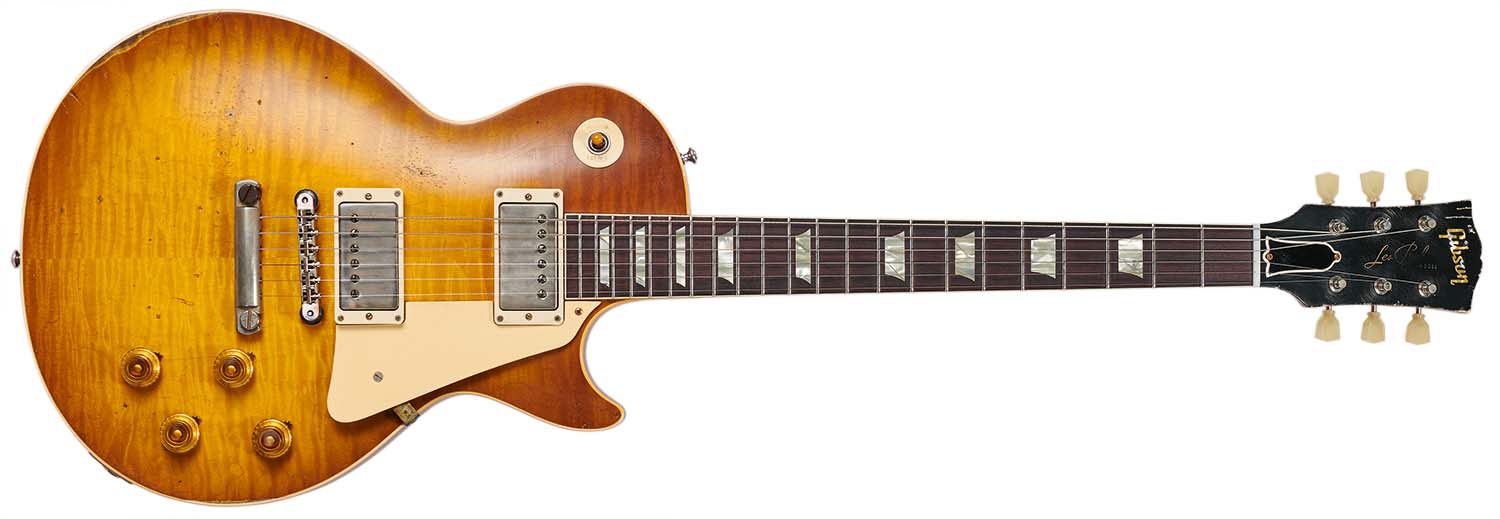
Gibson Murphy Lab ’59 Les Paul Standard Reissue Ultra Heavy Aged
- PRICE: $10,499 / £9,199 (inc aged Lifton pink-lined case)
- ORIGIN: USA
- TYPE: Single-cutaway, solid body electric
- BODY: Solid mahogany with flamed maple cap, hide glued
- NECK: Mahogany, 59 ‘medium C’ profile with long tenon and hide glue join
- SCALE LENGTH: 624mm (24.57”)
- NUT/WIDTH: Nylon, 42.85mm
- FINGERBOARD: Bound dark Indian rosewood, cellulose nitrate trapezoid, 305mm (12”) radius
- FRETS: 22, medium/jumbo
- HARDWARE: Heavy aged nickel plated ABR-1 tune-o-matic bridge, lightweight aluminium stopbar tailpiece, Kluson vintage, single line, single ring deluxe tuners, authentic profi le pickup covers
- STRING SPACING, BRIDGE: 51.5mm
- ELECTRICS: 2x Gibson Custombucker Alnico 3 pickups, 2x volumes, 2x tones, 3-way pickup selector; CTS 500k pots with paper-in-oil capacitors
- WEIGHT (kg/lb): 5.55/7.82
- RANGE OPTIONS: See Murphy Options box
- LEFT-HANDERS: No
- FINISH: Lemon Burst (as reviewed). Various colours available (see Murphy Options) – ultra-heavy aged nitro-cellulose
- CONTACT: Gibson

Dave Burrluck is one of the world’s most experienced guitar journalists, who started writing back in the '80s for International Musician and Recording World, co-founded The Guitar Magazine and has been the Gear Reviews Editor of Guitarist magazine for the past two decades. Along the way, Dave has been the sole author of The PRS Guitar Book and The Player's Guide to Guitar Maintenance as well as contributing to numerous other books on the electric guitar. Dave is an active gigging and recording musician and still finds time to make, repair and mod guitars, not least for Guitarist’s The Mod Squad.
“It holds its own purely as a playable guitar. It’s really cool for the traveling musician – you can bring it on a flight and it fits beneath the seat”: Why Steve Stevens put his name to a foldable guitar
“Finely tuned instruments with effortless playability and one of the best vibratos there is”: PRS Standard 24 Satin and S2 Standard 24 Satin review
